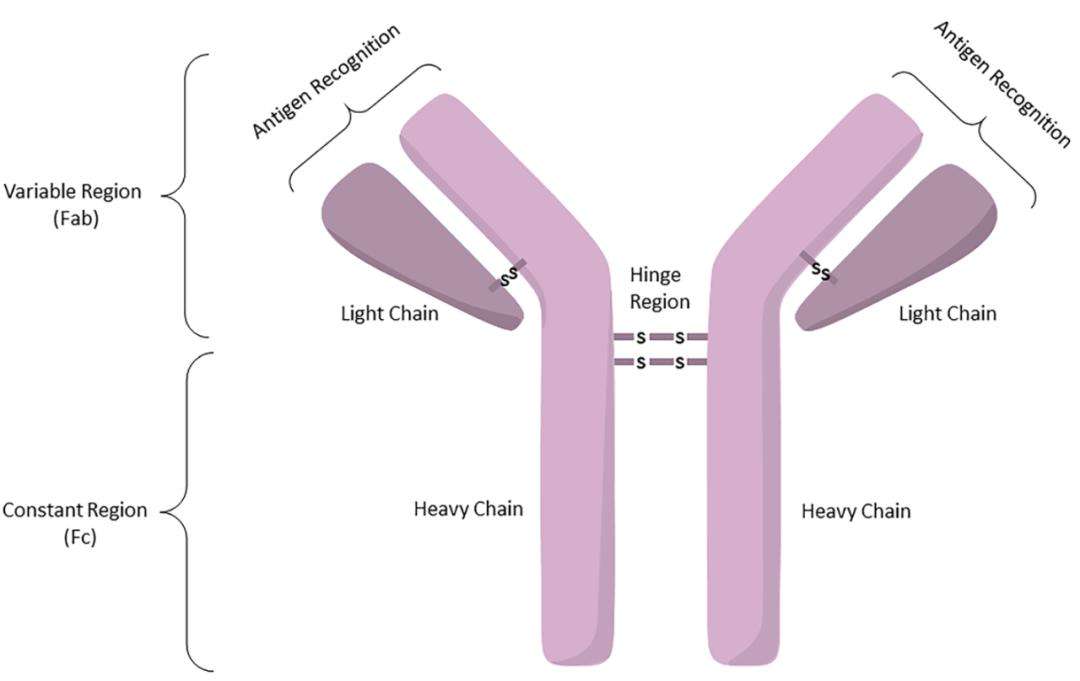An ADC consists of three basic elements: a tumor-specific monoclonal antibody (mAb), a small cytotoxic molecule called a payload, and a linker (Linker) that connects the mAb to the payload. Upon binding to the corresponding antigen on the tumor cell surface, the ADC/antigen complex is internalized and then the payload is released, leading to cytotoxicity and cell death.
Linker: The design of ADC Linker is critical to the success or failure of ADC drugs. It not only connects antibodies and payloads, but also affects the toxicity, stability and efficacy of ADC drugs. The most basic requirement of the linker is to meet the function of the switch: it is stable enough in the body, it will not fall off in the blood circulation, and avoid toxicity due to the falling off of the effector molecule; it can effectively release the effector molecule at the target.
The design of the actual linker can be very complex depending on the ADC drug. Connectors can be divided into two categories in terms of performance:
Cleavable linkers and stable linkers. Cleavable linkers include chemically cleavable linkers and enzymatically catalyzed linkers, wherein chemically cleavable linkers include hydrazone bonds and disulfide bonds, and enzymatic cleavable linkers mainly include glucose bonds and polypeptide bonds.
The conjugation method plays an important role in balancing the effectiveness and toxicity of ADCs drugs: the linker or the connection method determines the attachment site of the antibody, DAR, the distribution of the conjugated drug and the stability of the connection.
The linking method of early drugs is non-site-directed coupling.
Drug
There is a big difference in the position and quantity of antibodies. The finished drug is a mixture, which can easily lead to focusing and cause huge toxicity. In the past ten years, the iteration of ADC drugs has mainly come from the progress of coupling technology. The fixed-point coupling technology can achieve fixed-point quantitative coupling It can greatly improve the purity of the finished medicine.
Conjugation method – site-specific conjugation technology is mainly divided into three categories: antibody engineering method, chemical method, and enzymatic method.
The ADC drug has been upgraded by three generations of technology, and its stability, DAR value uniformity, CMC characteristics, and anti-tumor activity have been continuously improved, expanding the therapeutic window.
1. The toxicity of the toxic payload used in ADC drugs is not strong enough, and the stability of the linker is not good. It is easy to crack in the blood, causing serious toxic and side effects, and the therapeutic window is very narrow.
2. ADC drugs use strong payloads, and with the development of monoclonal antibody technology, the specificity of tumor targeting has been improved, but the traditional non-site-specific conjugation method is still used, and the distribution of DAR between 0-8 has poor uniformity.
3. ADC drugs mainly benefit from the development of site-specific conjugation technology, such as Thiomab, ThioBridge, and unnatural amino acid technology, which solve the problem of poor DAR value uniformity and improve pharmacokinetic properties; at the same time, it also expands the available cytotoxicity.
Type of drug, such as PBD, SN-38, Duocarmycin, etc.









